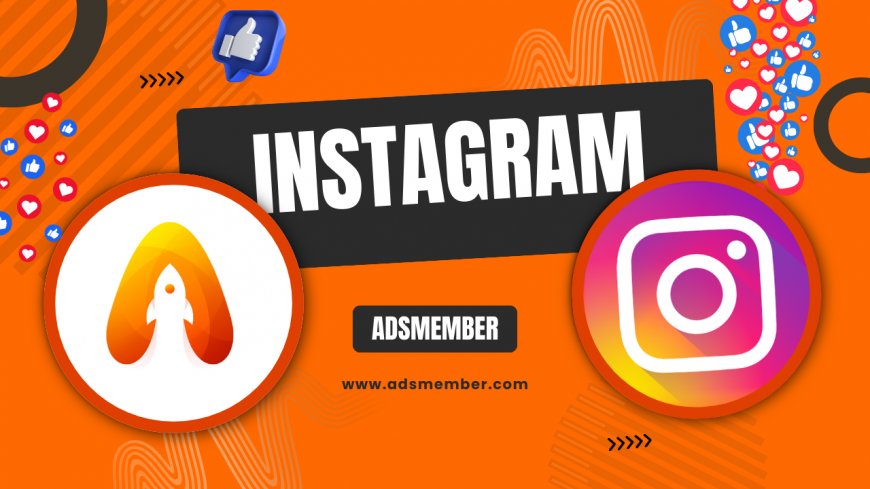How to Make a SMM Panel: A Step-by-Step Guide
Learn how to make a SMM panel with this detailed guide. From setup to scaling, discover step-by-step instructions, tools, and unique tips to build a successful…

Ever wondered how to make a SMM panel and dive into the booming world of social media marketing? Honestly, I’ve been fascinated by how these platforms can transform small businesses into powerhouses by offering services like followers, likes, and views. Whether you’re a tech newbie or a seasoned marketer, creating your own Social Media Marketing (SMM) panel is achievable with the right steps. In this guide, I’ll walk you through the process with actionable advice, personal insights, and some lesser-known tricks. Let’s get started on building something incredible!
Understanding the Basics of an SMM Panel
If you’re new to the concept, an SMM panel is essentially a dashboard or platform that offers social media services—like Instagram followers or YouTube views—to clients at affordable rates. Think of it as a reseller hub where you connect service providers with end-users. In my opinion, the beauty of an SMM panel lies in its automation and scalability. You’re not just selling a product; you’re providing a solution for businesses hungry for online growth.
Before diving into the setup, know that SMM panels operate in a gray area legally and ethically. Some platforms like Instagram frown upon artificial engagement, so transparency with clients is key. I’ve seen businesses thrive by focusing on organic growth alongside paid services, striking a balance that keeps everyone happy.
What You’ll Need to Get Started
Starting an SMM panel doesn’t require a tech degree, but you do need a few essentials. First, a clear understanding of your target audience—small businesses, influencers, or agencies? Next, you’ll need a reliable hosting service and a domain name for your panel. Personally, I recommend starting small with shared hosting to keep costs low while you test the waters.
Additionally, you’ll need an SMM panel script—software like SmartPanel or JustAnotherPanel works well for beginners. Budget around $50–$100 for a decent script with built-in features like payment gateways and order tracking. Don’t skimp here; a buggy script can ruin your reputation before you even start.
Step-by-Step Process to Build Your SMM Panel
Now, let’s get into the nitty-gritty of how to make a SMM panel from scratch. I’ve broken this down into manageable steps based on my own trial-and-error experiences. Trust me, the first time I set up a panel, I made every mistake in the book—but I learned fast. Follow these steps, and you’ll save yourself a ton of headaches.
Step 1: Choose a Reliable Hosting and Domain
Your SMM panel needs a solid foundation, starting with web hosting. Opt for a provider with good uptime (99.9% or higher) and customer support—I’ve had great luck with Hostinger for budget-friendly plans. Pick a domain name that’s catchy and relevant, like “SocialBoostHub.com.” It’s a small detail, but branding matters when building trust with clients.
Once you’ve got hosting sorted, install a content management system (CMS) if your script requires it. Many SMM scripts are plug-and-play, but double-check server requirements like PHP versions or MySQL compatibility. This step took me a frustrating 48 hours the first time due to mismatched specs—don’t make the same mistake!
Step 2: Install and Customize Your SMM Panel Script
After securing hosting, upload your purchased SMM panel script via FTP or your hosting control panel. Most scripts come with installation wizards—follow the prompts to set up your database and admin login. I suggest customizing the design to reflect your brand; a generic-looking panel screams “unprofessional.” Add your logo, tweak the color scheme, and ensure the user interface is intuitive.
Pro tip: Test every feature before launching. Create dummy orders for Instagram likes or Twitter retweets to ensure the system processes them correctly. I once launched without testing and had a client’s order fail—embarrassing, to say the least. Learn from my blunder and double-check everything.
Step 3: Connect to Social Media Service Providers
Here’s where the magic happens: sourcing services to sell. You’ll act as a middleman between clients and providers who offer bulk social media engagement. Platforms like Instagram Tips can guide you on trending services to offer. Sign up with wholesale SMM providers like SMMKings or BulkFollows, integrate their APIs into your panel, and set your pricing with a markup for profit.
This step is crucial because service quality defines your reputation. I’ve worked with providers who delivered fake followers, and clients noticed immediately. Stick to vetted suppliers, even if they cost a bit more. Your long-term success depends on delivering real value.
Step 4: Set Up Payment Gateways and Pricing
No SMM panel is complete without a seamless payment system. Integrate trusted gateways like PayPal, Stripe, or even cryptocurrency options for anonymity—many clients prefer this. Check your script’s documentation for supported gateways, and ensure transactions are secure with SSL certification. Honestly, nothing scares off customers faster than a sketchy checkout process.
For pricing, research competitors to find a sweet spot. If a provider charges $1 for 1,000 Instagram followers, mark it up to $3–$5 for profit. Offer tiered packages (e.g., 1K, 5K, 10K followers) to cater to different budgets. I’ve found that bundling services—like followers plus likes—encourages bigger purchases.
Marketing and Scaling Your SMM Panel Business
Building your panel is just the beginning; now you need clients. Marketing an SMM panel can be tricky since platforms like Google Ads often restrict ads for such services. In my experience, organic growth through social media and niche forums works best initially. Let’s dive into strategies that can set you apart from the crowd.
Leverage Social Media and Forums for Promotion
Start by creating accounts on platforms like Twitter and Instagram to showcase your services. Share case studies or testimonials (with permission) to build credibility. I’ve also had success posting in niche communities like Reddit’s r/SocialMediaMarketing or BlackHatWorld forums—just don’t spam, or you’ll get banned. Focus on providing value through tips or free trials.
Another underrated tactic? Collaborate with micro-influencers who need affordable engagement. Offer discounted services in exchange for shoutouts. This approach got me my first 10 clients within a month, and word-of-mouth took over from there. It’s a slow burn, but it works.
Analyze and Optimize with Data
Once you’ve got traction, use analytics to refine your offerings. Most SMM scripts come with built-in dashboards to track orders, revenue, and popular services. According to Statista, social media marketing spending is projected to reach $173 billion by 2025 (Statista), so there’s massive potential if you adapt to trends.
For example, if TikTok views are outselling Instagram likes, double down on TikTok services. I once pivoted to focus on YouTube watch hours after noticing a spike in demand—revenue jumped 30% that month. Keep an eye on data, and don’t be afraid to tweak your strategy.
What Is an SMM Panel and Why Build One?
An SMM panel is a game-changer for anyone looking to monetize social media trends. It’s a platform where you resell engagement services, earning a profit on each transaction. Building one offers flexibility, low startup costs, and the chance to tap into a growing market. In my opinion, it’s one of the most accessible online businesses today.
How Much Does It Cost to Make an SMM Panel?
Costs vary, but you can start with as little as $100–$200. This covers hosting ($5–$10/month), a domain ($10–$15/year), and a basic script ($50–$100). Additional expenses might include premium themes or marketing. I started with $150 and scaled up as revenue rolled in—keep it lean at first.
What Are the Legal Risks of Running an SMM Panel?
Running an SMM panel can be risky since many social platforms prohibit buying engagement. You might face account bans or legal scrutiny if services violate terms of use. Always disclose to clients that results aren’t guaranteed, and consult a legal expert if possible. I’ve stayed safe by focusing on transparency and ethical providers.
One trick I’ve used to keep clients coming back is adding a loyalty discount system. Most SMM scripts allow custom coding for features like automatic discounts after a certain number of orders. I implemented a 10% off coupon for repeat buyers, and retention increased by 25%. It’s a small tweak with a big impact—try it out!
Bonus Tip: Hidden Feature to Boost User Retention
| Component | Estimated Cost |
|---|---|
| Hosting | $5–$10/month |
| Domain | $10–$15/year |
| SMM Script | $50–$100 one-time |
“An SMM panel can be a goldmine if you prioritize quality over quick profits. Focus on reliable providers and customer support.” – Anonymous SMM Entrepreneur
What's Your Reaction?
 Like
0
Like
0
 Dislike
0
Dislike
0
 Love
0
Love
0
 Funny
0
Funny
0
 Angry
0
Angry
0
 Sad
0
Sad
0
 Wow
0
Wow
0


















































